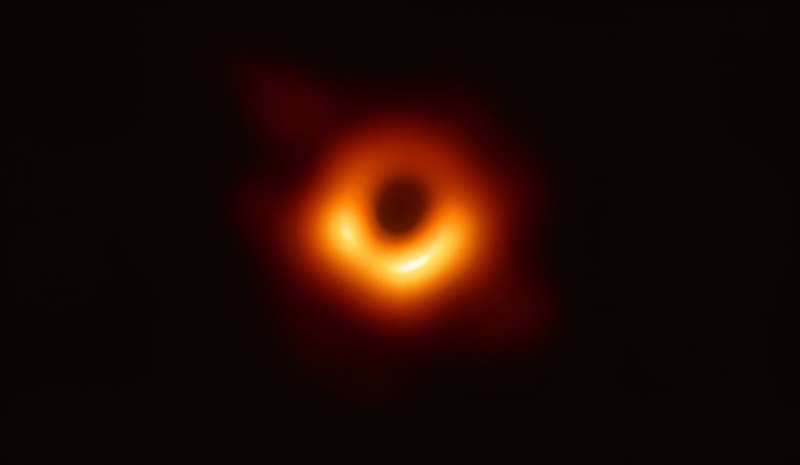This article has been reviewed according to Science X's editorial process and policies. Editors have highlighted the following attributes while ensuring the content's credibility:
fact-checked
preprint
trusted source
proofread
What's next for the Event Horizon Telescope? Twelve possible new targets

Both the Milky Way and a galaxy known as M87 have supermassive black holes at their core. These are the two largest black holes we know about and the Event Horizon Telescope has just captured stunning images of their event horizons. A new paper looks at what we might expect from a next generation EHT and highlights twelve targets that should be top of the list.
The Event Horizon Telescope (EHT) is an international collaboration that uses a global network of radio telescopes. Connecting multiple telescopes together in a technique known as interferometry enables them all to work together, forming one massive virtual telescope the size of the distance between them. In April 2019, the EHT achieved a historic milestone by capturing the first-ever image of a black hole, located at the center of the galaxy M87.
Black holes like that in M87 are most definitely the target of the EHT. They are regions in space with such strong gravitational forces that nothing, not even light, can escape. They are formed from the remnants of massive stars that collapse under their own gravity, creating an object known as a singularity which has infinite density. Surrounding the singularity is the event horizon, beyond which no information or matter can return and it is this which is of particular interest to EHT.
Several extensions to the array are planned to enhance the quality of images. Doing so will improve its resolution, allowing for a larger number of black holes to be studied. Theoretical studies of EHT images of both Sgr A at the center of our galaxy and the black hole at the center of M87 favor models with dynamically significant magnetic fields.
Magnetically arrested disk (MAD) models, which power jet mechanisms, have important implications for the relationship between supermassive black holes and the evolution of its host galaxy. The extensions require new dishes to be added to the infrastructure and many existing telescopes require upgrades. On completion, simultaneous observations in the frequency range 86-230-345 GHz will be possible, facilitating new studies.
In the paper authored by Xinyue Alice Zhang from the Center for Astrophysics at the Harvard & Smithsonian, the team reports on their attempt to study the 12 most promising supermassive black hole targets for the EHT. The study is available on the arXiv preprint server.
The targets were selected following an exhaustive analysis that started off with the ETHER database, a list of 3.8 million sources. This was then narrowed down to those with a flux density (signal strength) that allowed mass measurements to be taken optically. A fair chunk of this was done by hand. Further sources with large angular sizes are being constantly added to the database so the number of possible targets will rise in time.
The target galaxies identified to date include; IC1459, NGC45elliptical94, NGC3998, NGC4261, NGC2663, NGC3894, M84, NGC4552, 3C 317, NGC315, NGC1218 and NGC5077. These are all suitable for future EHT targets but they all exhibit some similarities. For example, many of them are elliptical galaxies but a few are classed as lenticular galaxies.
More information: Xinyue Alice Zhang et al, Accessing a New Population of Supermassive Black Holes with Extensions to the Event Horizon Telescope, arXiv (2024). DOI: 10.48550/arxiv.2406.17754
Journal information: arXiv
Provided by Universe Today




















